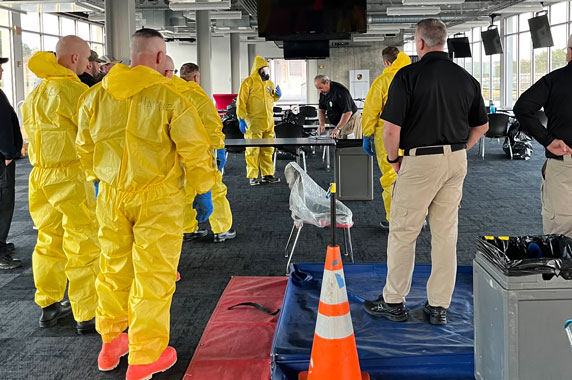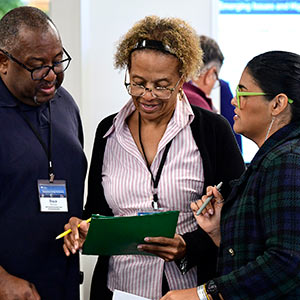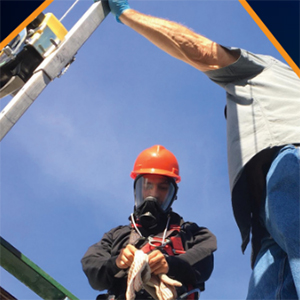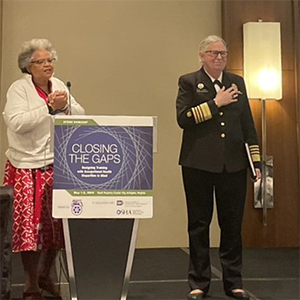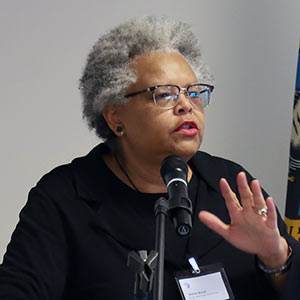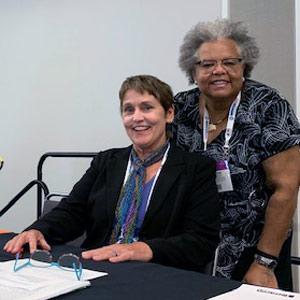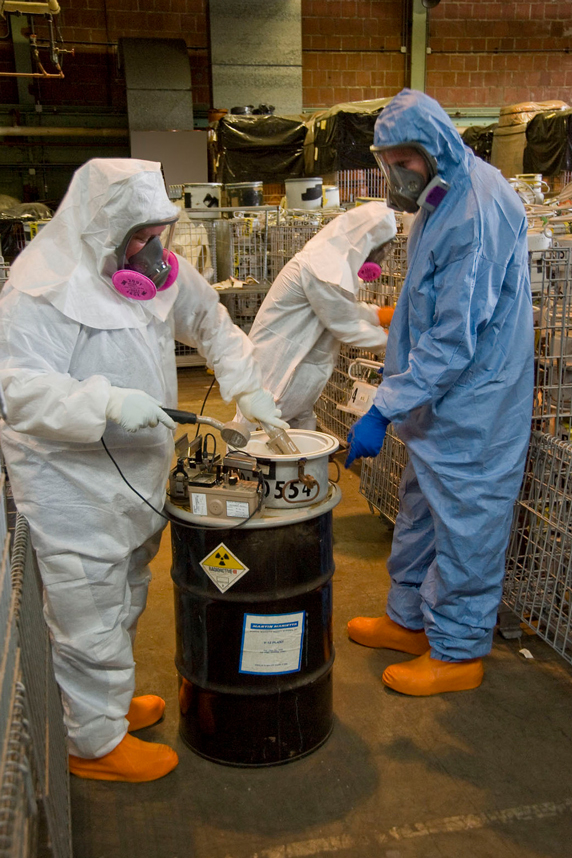 The NIEHS/DOE Nuclear Worker Training Program aims to provide high-quality hazardous materials and emergency response training to ensure that DOE site workers can identify hazardous situations and take appropriate actions to protect themselves, fellow workers, and the environment. (Photo courtesy of DOE)
The NIEHS/DOE Nuclear Worker Training Program aims to provide high-quality hazardous materials and emergency response training to ensure that DOE site workers can identify hazardous situations and take appropriate actions to protect themselves, fellow workers, and the environment. (Photo courtesy of DOE)Funded by the NIEHS Worker Training Program (WTP), the United Steelworkers (USW) Tony Mazzocchi Center offers specialized training in response to a shortage of radiological control technicians (RCTs) at U.S. Department of Energy (DOE) nuclear cleanup sites.
“Through an almost 30-year partnership with DOE, NIEHS provides grants to nonprofit organizations that support hazardous material and emergency response training for workers across DOE sites,” said WTP Public Health Educator Demia Wright.
“We appreciate how the USW Tony Mazzocchi Center delivers training that helps DOE address health and safety needs and also fill shortages in staffing or technical expertise,” she added.
The NIEHS/DOE Nuclear Worker Training Program, at DOE sites where cleanup is ongoing, helps employees implement strategies to prevent release of hazardous substances into the environment and understand how to protect themselves.
Training is also available for current workers who want additional skills to maintain employment, as work scope and skill requirements can change at cleanup sites.
Comprehensive job training
Currently, the Tony Mazzocchi Center is training workers to check for radioactive contamination, while ensuring onsite health and safety, at the Portsmouth Gaseous Diffusion Plant in Piketon, Ohio. Decontamination and decommissioning of this former uranium enrichment and nuclear fuel production plant began in 2011 and continues.
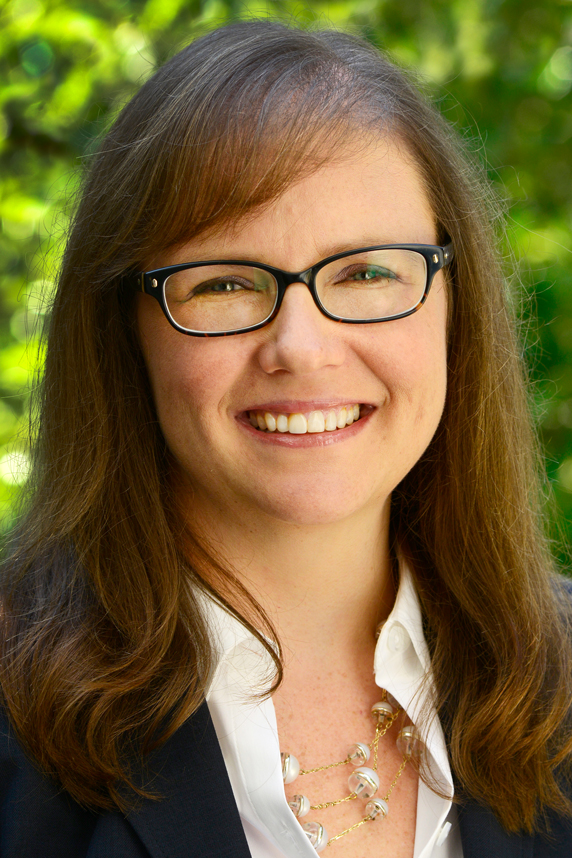 Among her other duties, Wright serves as program administrator for the NIEHS/DOE Nuclear Worker Training Program, and she provides expertise in communications and program evaluation for WTP. (Photo courtesy of Steve McCaw / NIEHS)
Among her other duties, Wright serves as program administrator for the NIEHS/DOE Nuclear Worker Training Program, and she provides expertise in communications and program evaluation for WTP. (Photo courtesy of Steve McCaw / NIEHS)“At the Portsmouth site, there is a need for well-qualified RCTs to keep workers safe from radioactive waste,” said Fiona Galley, training program assistant at the Tony Mazzocchi Center. “RCTs should be equipped with as much knowledge, hands-on training, and experience as possible so they can identify issues or hazards on the job that may affect the health and safety of workers.”
The training is free to participants. For seven months, they attend several classes a week where they learn about internal and external exposure control, math, sources of radiation, biological effects of radiation, shipment and receipt of radioactive material, and radioactive incidents and emergencies.
“Our long-term goal is to have all participants employed as RCTs at the site,” Galley explained.
A safer future
“With 55% of the workforce poised to retire in the next five to 10 years, training platforms like the RCT program will be essential in preparing the next generation workforce to step into critical roles across the DOE complex, opening up career opportunities at local and national levels,” said Joel B. Bradburne, manager of the DOE Portsmouth/Paducah Project Office.
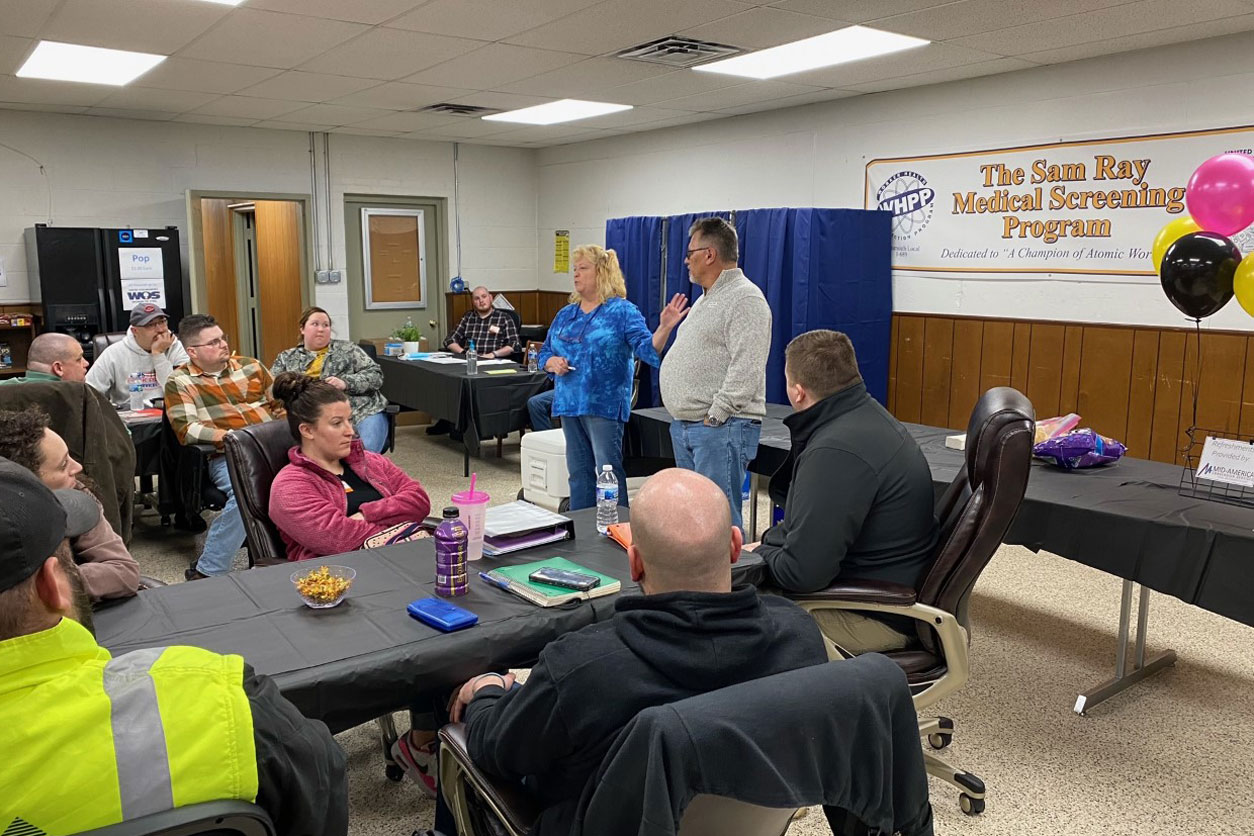 Trainees in Ohio are welcomed by Tony Mazzocchi Center staff. (Photo courtesy of USW Tony Mazzocchi Center)
Trainees in Ohio are welcomed by Tony Mazzocchi Center staff. (Photo courtesy of USW Tony Mazzocchi Center)The center will conduct a second RCT training program at USW Local 8-550 in Paducah, Kentucky, scheduled to begin April 26 and continue through Nov. 3. They are partnering with West Kentucky Community and Technical College, Four Rivers Nuclear Partnership, and local and state civic leaders.
“Workplaces are nearly an extension of our communities, so I believe a safer workplace can make for a safer community and cleaner environment,” said Ashlee Fitch, director of the Tony Mazzocchi Center. “This partnership between community organizations and between DOE and NIEHS achieves both. We are so grateful for the hard work and dedication that helped make this a success.”
(Mali Velasco is a research and communication specialist for MDB, Inc., a contractor for the NIEHS Division of Extramural Research and Training.)





